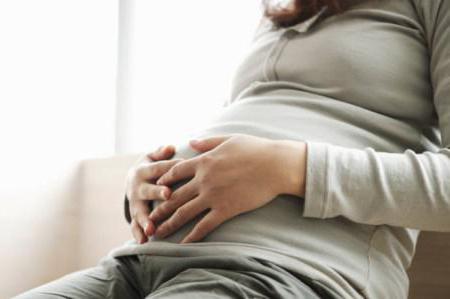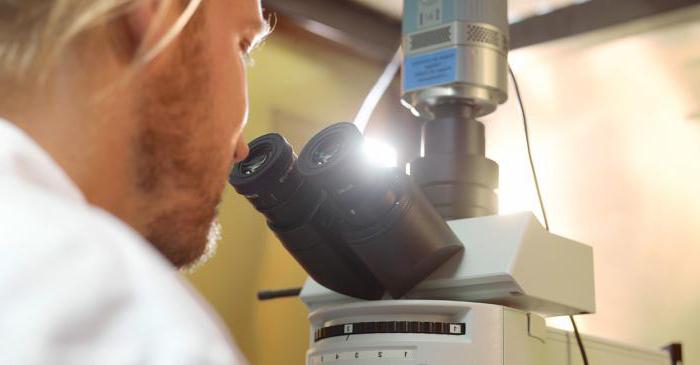With a normal pregnancy, closer to the time of delivery, prenatal contractions of the uterine walls are observed, which are often painless, but they mostly occur at night and provoke softening of the cervix.
The main types of anomalies include discoordination of labor, which provokes a violation of the normal course of pregnancy. Such violations pose a serious threat to the health of the woman and the fetus, which is why they require timely medical intervention and medical correction.
How does patrimonial activity proceed?
To understand what are the complications of labor, it is important to clearly understand how the birth occurs in a normal state. A pregnant woman should clearly understand what constitutes a natural labor activity, how it is possible to recognize the onset of labor and on what the intensity of this process depends.

Generic activity is inherently a reduction in the walls of the uterus, alternating with relaxation. Contractions continue throughout the entire period of the birth. In the pregnant body, they provoke various kinds of changes, in particular such as:
- softening of the cervix;
- disclosure of the cervix;
- promotion of the child through the birth canal;
- birth of a child;
- separation of the placenta from the walls of the uterus;
- exit of the placenta.
The normal course of labor is characterized by dynamism and regularity. Regularity implies contractions of the same duration and intensity, having equal intervals of time. Dynamism implies a gradual increase in intensity and an increase in the duration of uterine contractions.
Contractions are required to open the cervix, as well as the subsequent movement of the fetus through the birth canal. The uterus contracts somewhat during contractions, it becomes much denser and somewhat decreases in volume, thereby pushing the baby out. Normally, while contractions are weak and short, the opening of the cervix occurs rather slowly, and when contractions become more intense, the opening in the cervix stretches more and more, and the baby begins to gradually move along the birth canal.
What provokes the occurrence of discoordination of contractions
Discoordination of labor is characterized by the fact that contractions are very violent, painful and often not effective enough. In this case, the opening of the cervix and subsequent advancement of the child does not occur. Unlike many other complications of childbirth, the discoordination of labor is symptomatic from the very beginning, so it is quite possible to recognize its course in the body. Unlike the natural course of childbirth (in which the first contractions are almost painless), with violations, the first sensations will be very sharp and painful.

In the normal state, labor activity proceeds rather slowly and gradually, since the very first contractions that the pregnant woman feels usually last for several seconds, and the duration between them is no more than 20 minutes. Discoordination of labor is characterized by the fact that from the very beginning of labor, the contractions become long and frequent, as they last more than 1 minute, and the intervals between them do not exceed several minutes. In addition, the contractions are quite irregular and they are felt quite painfully. At the same time, there is no positive dynamics in the course of labor and a gradual increase in contractions.
Causes of pathology
Unlike the natural course of childbirth, the pathological process is characterized by painful, spastic and irregular contractions of the uterus, as well as the absence of changes in its structure. With violations of the normal course of labor, the cervix does not soften, it becomes dense and practically does not open. The pathological process can continue for several days.

If there is a discoordination of labor, the reasons for this can be very different, in particular, they lead to a similar state:
- nerve stress;
- inflammatory processes in the uterus;
- metabolic and endocrine disorders.
In addition, there may be other reasons for the discoordination of labor activities, since age-related changes lead to such a violation. In particular, pathology can occur if the age of the primiparous is more than 30 or less than 17 years.
Pathology Features
Many pregnant women are interested in: discoordination of labor - what is it and how does pathology develop? Such a violation is characterized by irregular intense contractions of various parts of the uterus, occurring due to a shift in the rhythm region. At the same time, a similar condition can be observed in several separate areas of the uterus. In this case, there is no synchronization of contraction and relaxation.

Discoordination of labor is a rather dangerous pathology that provokes a violation of uterine contractions, as well as untimely discharge of amniotic fluid. The cervix becomes much denser, and the edges of the cervix become stiff and cannot be stretched.
Thus, the discoordination of labor (what it is and how this pathology manifests itself, we discussed above) requires the intervention of specialists who can quickly recognize the occurring disorders in the body and select the most appropriate methods of therapy.
Symptoms of pathology
Discoordination of contractions is considered the most unusual and rather dangerous complication of labor. Unlike many other complications, the causes of the pathology that have arisen are not related to the state of health of the pregnant woman or to the peculiarities of the process of bearing a child. The main cause of the violation is associated with the state of the woman’s nervous system at the time of the onset of labor.
Contractions appear due to the passage of nerve impulses sent by the brain to the uterus. If these impulses pass quite often and haphazardly, discoordination of labor activity arises. The main reason for this condition and the violation of the natural course of childbirth is the fear of the pregnant woman before childbirth.

As a result of failures in the nervous system, the signals responsible for the course of labor are uneven and can weaken after a certain time or, on the contrary, increase. Due to ongoing violations, contractions become much more painful and not productive enough. Often, such contractions badly affect the well-being of the pregnant woman and the child.
The main signs of labor discoordination are considered to be an increase in pain during childbirth, as a woman has panic tension, fear of childbirth and the presence of negative emotions. At the same time, spastic uterine contractions during contractions can occur not only in the region of longitudinal nerve fibers, but also in the transverse region.
In some cases, labor coordination may occur due to cervical dystocia, which occurs as a result of abnormalities in the fetus or pregnant woman. A similar condition can be observed due to the presence of a fairly narrow pelvis in a woman, which provokes a complex course of labor.
In case of violation of normal labor, multiple tears of the cervix, vagina, and also tears of the walls of the uterus can occur. In addition, a prolonged course of childbirth can be observed, and in some cases a birth injury occurs in the child.
The severity of the pathology
During childbirth, discoordination of labor can often be observed. Classification of such a pathology is based on the severity and possible complications of the disease.
The first stage of the disease is characterized by the occurrence of prolonged, frequent and painful contractions. The relaxation period is significantly reduced. The opening of the cervix occurs very slowly, and as a result of this, significant ruptures can occur. During the examination, it is found that there is very little fetal water. If the opening of the fetal bladder occurs, the contractions can immediately normalize.
The second degree of pathology is often manifested in the presence of a narrow pelvis in a woman or as a result of the use of certain rhodostimulation, which is prohibited for a pregnant woman. In addition, the 2nd degree arises as a result of aggravation of the course of the 1st stage of pathology. This stage is characterized by a rather long and painful course of labor. The cervix may remain immature for up to 10 hours after the onset of labor. The fetus throughout the whole time remains stationary and does not advance towards the entrance to the small pelvis. A similar condition threatens to rupture the walls of the uterus, as well as injuring some organs of the fetus.
The third stage of the pathology is the most difficult, since the uterus in this case is divided into several separate zones, where each takes over the function of a kind of launch center. Each section of the uterus contracts in its own rhythm, which completely does not coincide with one another. In this case, labor may cease completely.
The uterus compresses the fetus very much, as a result of which it suffers very much and sometimes a tumor can be diagnosed during natural birth. With the occurrence of this degree of pathology, a cesarean section is indicated if there is no contraindication for such an operation.
Diagnosis of birth discoordination
We already know what discoordination of labor is. Diagnosis and treatment require a competent, integrated approach. It is very important to recognize existing violations in a timely manner, as this will allow you to choose the required treatment technique.

Diagnosis involves cardiotocography. When it is performed, sensors are attached to the pregnant woman’s stomach, fixed with elastic bands. One of these sensors detects the baby’s heartbeat.
Another sensor helps control the process of contractions. All results are recorded in the form of graphs. By analyzing the results, the doctor can get a complete picture of the course of labor and its possible violations.
Treatment of birth disorders
Treatment of discoordination of labor should be primarily aimed at eliminating the pathological process. If severe cramping of the uterus is observed, then tranquilizers and antispasmodics are prescribed to the pregnant woman. After the termination of the action of the substances used, labor activity returns to normal.

Therapy should be aimed at eliminating painful contractions of the uterus, as well as accelerating the opening of the cervical organ. For the treatment of labor discoordination, painkillers, antispasmodics, and sedatives are used. For the operative preparation of the cervix to the disclosure and the beginning of labor, prostaglandin-based preparations are used. The duration of the course of therapy largely depends on the characteristics of the pathological process, but it should not last more than 3-5 days. In the absence of the required effect of the therapy, caesarean section is indicated.
What to do if the expectant mother suspects that she has a discoordination of labor? The pregnancy pathology clinic has all the necessary tools for conducting quality complex therapy, so it is important to consult a doctor in a timely manner.
Prevention
In order to prevent the discoordination of childbirth, careful adherence to the regimen prescribed by the doctor is shown, as well as painless and careful management of the entire process and complete control by specialists. Drug therapy is mandatory as a prophylaxis in the presence of risk factors for uterine contractions.
Women at risk are sure to have physiological and psychological preparation for childbirth, and it’s also important to teach a pregnant woman muscle relaxation techniques. It is imperative to control muscle tone and avoid stressful situations. The duration of a night's sleep should be at least 8-10 hours, and it is also important to correctly organize a day's rest. Long walks in the fresh air and the right food are provided.
The course of labor during discoordination
Childbirth with discoordination occurs naturally or a cesarean section is prescribed - it all depends on the severity of the pathology and the complications that arise.

In the absence of indications for surgery, drug therapy is performed. For this, the introduction of antispasmodics is prescribed, in particular such as Baralgin or No-Shpa. In addition, painkillers are used. To eliminate uterine hypertonicity, "Brikanil", "Partusisten", "Alupent" are used, after which literally after half an hour the contractions resume and proceed normally.
The prophylaxis of fetal hypoxia is necessarily shown, and when the cervix is opened at 4 cm, mandatory epidural anesthesia is performed (the drug is injected into the spine).
If drug therapy does not help, then a cesarean section is performed., The main indications for surgery are:
- adverse outcome of previous births;
- the presence of concomitant diseases;
- large fruit;
- narrow pelvis;
- pregnancy overtaking;
- malposition.
In the presence of the pathology we are considering during childbirth, an experienced gynecologist, an anesthetist-resuscitator, and a neonatologist must be present.